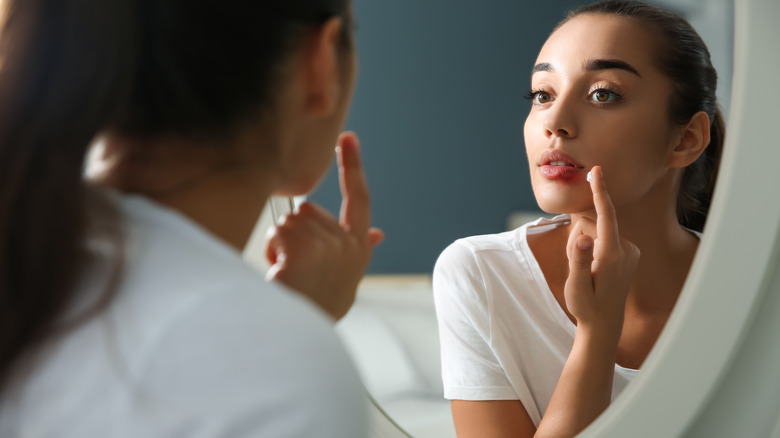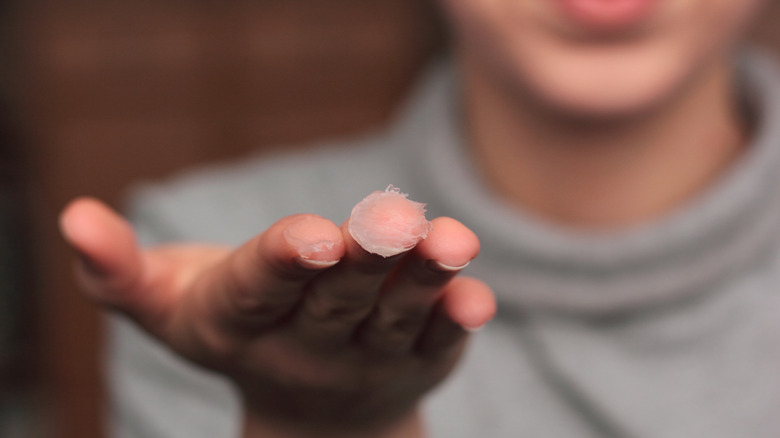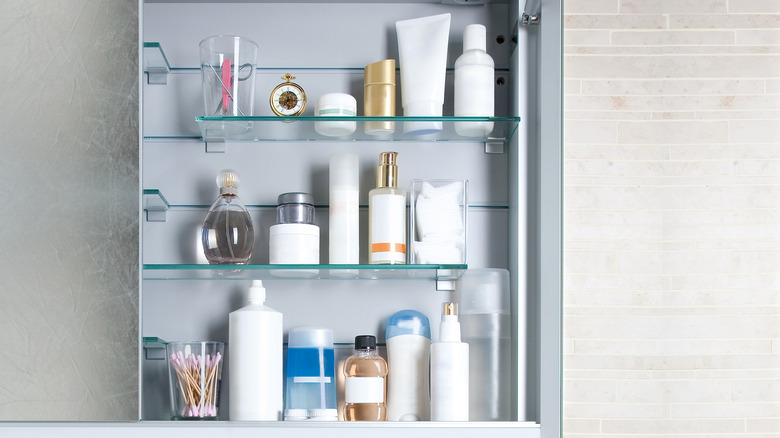You Can Skip Buying Fancy Lip Masks And Just Use Your Face Moisturizer
Dry, cracked, painfully flaky – chapped lips are like an epidermal drought in desperate need of rainfall and moisture. The skin found on lips lacks oil glands, making them thinner and more sensitive compared to skin anywhere else on the body; thus, lips are more vulnerable to dryness and chapping if not properly addressed. Cold or dry weather are most often the culprits for this, but chapped lips can also arise from extended sun exposure, dehydration, allergies, or licking.
Whether it's from the harsh winter air or an overly air-conditioned room, finding a solution to combat chapped lips can seem like an interminable quest. With the right approach, though, maintaining hydrated lips that both look and feel good can easily be sustained, no matter what's in the air. An ideal lip balm has a thin enough texture to penetrate the lips while also being thick enough to act as a protective barrier atop them. Contradictory as this may seem, all it takes is a few minutes of layering to easily revive dry lips – and the secret to achieving this can be found in every household.
How exactly does this work?
If the overpriced lip masks aren't your thing, try applying a small amount of facial moisturizer or eye cream onto bare lips, followed by a layer of thick balm on top. Unlike chapsticks, lotions and creams actually contain more moisturizing ingredients and water; they're also formulated to be absorbed by the skin. Following this up with an occlusive to lock it in slows the evaporation process, keeping lips moisturized and supple.
What literally and figuratively seals the deal of this hydrating hack is the use of an occlusive. This moisturizing technique is also known as slugging, the viral skincare trend of applying an occlusive product as the final step in a nightly skincare routine (creating a glossy or "slug-like" appearance on the skin's surface). Using petrolatum atop moisturizer prevents water loss on the lips and seals this moisture in.
According to Dr. L. J Maxfield, a board-certified dermatologist and trained Mohs surgeon, petrolatum is highly effective at preventing 99% of epidermal water loss while still allowing that 1% for optimal wound healing (via Glamour). Petrolatum is also non-comedogenic – meaning it doesn't clog the pores – so it is potent in helping restore and repair irritated skin barriers on the lips.
Are there risks to lip slugging?
Lip slugging is particularly helpful for unrelenting chapped lips in those with allergies or hypersensitivity to lanolin, an oil from sheep's wool commonly used in hydrating lip products. The waxy substance has been used to moisturize lips for centuries due to its healing properties for dry skin. However, it is also a prevalent allergen, which makes it challenging to obtain an effective lip balm without it.
Understanding skin types and certain ingredients in moisturizers are also crucial to successfully practice lip slugging. Avoiding moisturizers with active ingredients such as retinol, chemical exfoliants (AHAs, BHAs, or any other), and vitamin C – even if the concentrations aren't major – is essential for soothing the lips. Products such as facial oils, eye creams, hand creams, or even body lotions are best to pair with an occlusive for the lips' sensitive skin.
Combining this simple yet helpful technique with habits like staying hydrated and refraining from picking at or licking lips can have a significant impact on deterring them from becoming chapped. Rather than scouring to no avail for expensive, lanolin-free lip balms and masks, this dynamic duo of facial moisturizer followed by an occlusive is ready to be slugged out in the self-care arsenal.


